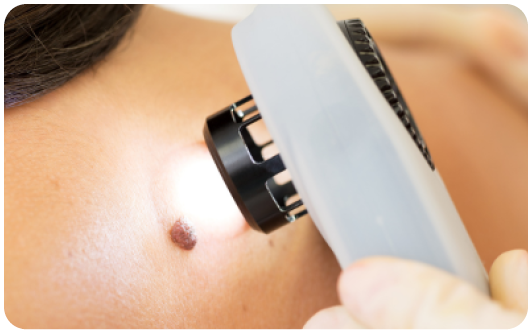Moles are small spots on your skin. Almost everyone has them, and most are harmless. But some...
_page1_image9-jpg-3.jpeg?height=200&name=ABCDEFG%20melanoma%20guide__Al%20Nour%20(2)_page1_image9-jpg-3.jpeg)
IMPORTANT UPDATE: St George Skin Cancer Centre has relocated to a new site located at 20 King St, Rockdale,
as of 15 December 2025. All appointments from this date will be at the new location.
HOLIDAY TRADING HOURS: Please be advised that our centre will be closed from Monday, 22 December to Friday, 2 January.
We will resume normal hours from Monday, 5 January. We wish you all a safe and festive celebration.
We are a private billing clinic. Medicare rebates available.
No referral required.
Opening hours:
Mon: 8.00am - 4.30pm
Tue & Thur: 9.00am - 4.00pm
Wed: 8.00am - 5.00pm
Fri: 9.00am - 4.00pm
Open select Saturdays: call clinic to confirm
Address:
20 King Street
Rockdale, NSW 2216
Phone: 02 9587 6033
Email: st.george.reception@skincancercentres.com.au
Parking:
Parking available offstreet.

St George Skin Cancer Centre is a private billing facility and we appreciate full payment on the day of consultation. We offer several payment options, including cash, EFTPOS and credit card. For your convenience, we use Medicare online so your rebate will be refunded promptly. Please ask our staff for more information.
* Concession rates apply to Commonwealth Seniors and Healthcare card-holders.
$145
Photodynamic therapy: Price upon consultation
Cancellation policy
We require a minimum of 2 hours’ notice for any appointment cancellation to allow time to reallocate your appointment to another patient. If you cancel within 2 hours of your appointment, or fail to attend a booked appointment, we reserve the right to charge a pre-payment prior to future bookings. In the case of pre-paid services, the service will be forfeited.
At our skin cancer clinic in Sydney (Rockdale), St George Skin Cancer Centre, we provide a comprehensive approach to looking after your skin health. The qualified team works primarily in skin cancer diagnosis and treatment, and experienced doctors are supported by a highly trained team of support staff for your optimal care. Following our vision of a world where nobody dies of skin cancer, we deliver the highest standard of care and save lives every day. Our medical team will provide you with expert advice, utmost skill – and most importantly, peace of mind. We can help you with skin cancer screening and diagnosis, surgical and non-surgical skin cancer treatments, sun damage repair, and wound and scar management.
Your health and satisfaction are at the forefront of everything we do. We understand that all patients have varying requirements and aspirations; therefore, we will always tailor your care plan for you and work hard to exceed your expectations. Thank you for choosing us for your skin check in Sydney!

Early melanomas are usually very small (less than 1mm) and have not yet spread to other areas of the body such as the lymph nodes or other organs. Melanoma typically stands out as looking different from the rest of the lesions on your skin and often shows one of the ABCD signs: Asymmetry, irregular Border, multiple Colours, or Diameter larger than 6mm.
Conveniently located in Town Square Arcade, St George Skin Cancer Centre in Kogarah is just 45 minutes from Sydney CBD. Parking is available in the council car park for $2.20 per hour. Enter via Derby Street, put the receipt on your dashboard and take the lift to level 1 for entrance to the arcade. If you're taking public transport, the nearest bus stop is at Railway Pde at Derby St.
Comprehensive skin cancer checks are privately billed, which means they are not fully covered by Medicare. However, after you pay the upfront cost of the skin check, you can claim a partial Medicare rebate of approximately $39 or more.
Doctors with advanced training in skin cancer medicine perform comprehensive skin checks in dedicated facilities that are fully equipped to diagnose, biopsy and treat all skin cancers using the latest tools and technologies for earliest diagnosis. They have advanced qualifications and dedicate their practise full-time to skin cancer management.
Yes, a full-body skin cancer check - in which a doctor performs a comprehensive check of your entire skin surface with a dermatoscope from head to toe - is the mainstay for detecting sklin cancer. Skin cancer cannot be diagnosed with the naked eye and requires special tools to see beneath the skin's surface to identify changes in the cells. Skin cancer is curable if detected early enough, which is why professional full skin checks with a doctor are so important.
WHY CHOOSE US
